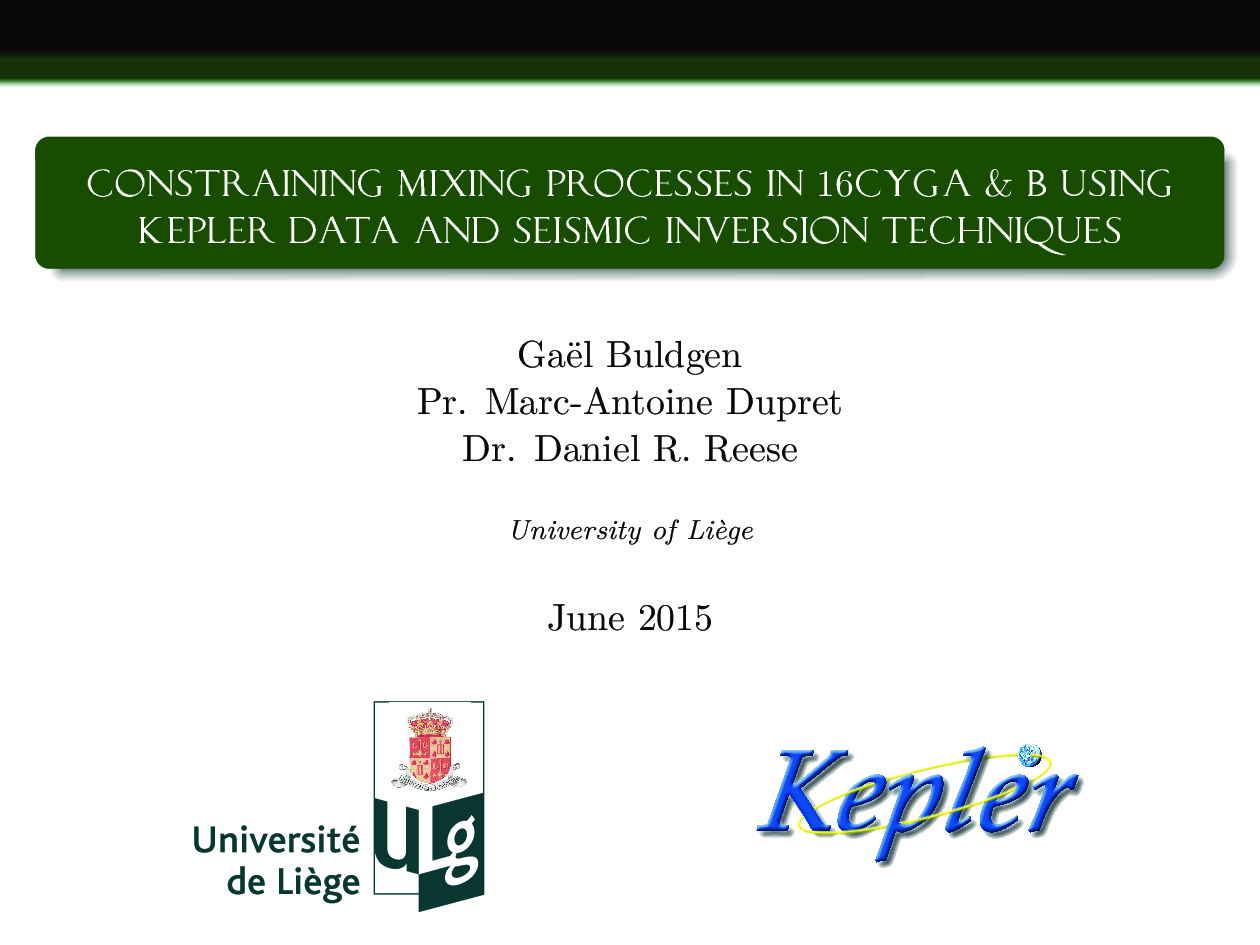Constraining mixing processes in 16CygA and 16CygB using Kepler data and seismic inversion techniques
Affiliation
University of Liège
Main category
Natural Sciences (Astrophysics and Astrononmy)
Abstract
Constraining additional mixing processes is a central problem in stellar physics. Indeed, their
impact on determined stellar ages is non-negligible and thus strongly affects our studies of stellar
evolution, galactic history, and exoplanetary systems. However, the quality of the Kepler data
allows us to use new seismic tools to constrain these processes. In this talk, we will show a
particularly efficient method for constraining chemical mixing in stellar interiors using custommade
structural integrated quantities. These quantities are designed to probe particular regions of
the stellar interior and are estimated via the SOLA inversion method (Pijpers and Thompson 1994).
They help us determine the values of parameters describing extra mixing processes. Inversions of
such quantities have been originally described for the mean density in Reese et al. (2012) and have
been extended to the acoustic radius and a first indicator of core conditions in Buldgen et al. (2015).
A more efficient indicator for core conditions has now been derived and successfully tested using
test cases similar to the 16Cyg binary system (Buldgen et al. in prep.). In this talk, we will show
how our technique applies to the system 16Cyg and constrains additional mixing processes using
the above structural indicators. Additional indicators and further studies will lead to seismically
constrained chemical profiles for stars observed by Kepler, thereby helping us to disentangle the
problem of additional mixing processes and ultimately to provide better stellar ages.
Do you have problems viewing the pdf-file? Download presentation
here
If the presentation contains inappropriate content, please
report the presentation. You will be redirected to the landing page.
